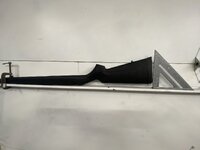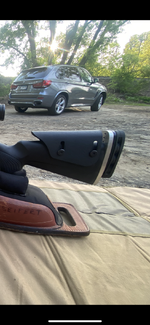- Joined
- Sep 24, 2020
- Messages
- 470
The other day I was modifying a Tikka to raise the recoil pad more in line with the bore line when I noticed how different the angle is from a LimbSaver to a factory recoil pad. My understanding of physics is that the closer to 90 degrees that the butt pad is to the bore line the less muzzle rise you will have. I set up a factory Tikka stock on a flat surface relative to bore line to show the difference in pitch.
Factory pad.

LimbSaver pad.

I am wondering how much the change in angle will negatively impact recoil vs the benefit gained from a softer pad?
Stock that I modified.

Ryan
Factory pad.

LimbSaver pad.

I am wondering how much the change in angle will negatively impact recoil vs the benefit gained from a softer pad?
Stock that I modified.

Ryan
